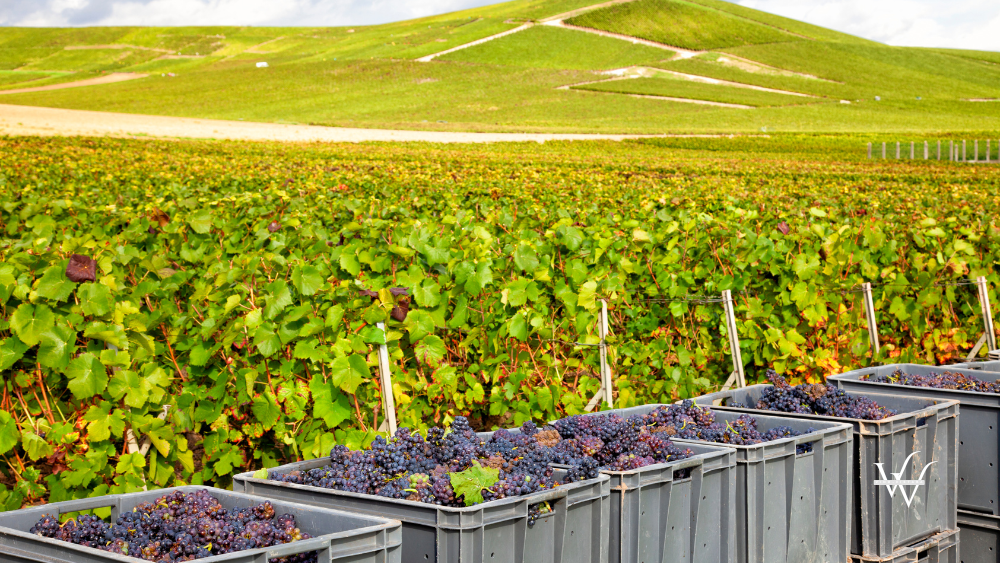Despite the economic uncertainties and a general slowdown in global wine demand, the Burgundy region of France continues to hold its ground as a leading producer and exporter of premium wines.
For the 2024–2025 campaign, Burgundy’s production slightly surpassed 1.2 million hectoliters, equivalent to more than 161 million bottles. This marks the second smallest harvest of the past fifteen years, only above 2021. Following two generous vintages in 2022 and 2023, the region benefits from solid stock levels, enabling it to meet both domestic and export needs despite reduced output.
Production and Stocks
The 2024 vintage brought a notable reduction in production, contributing to a slower sales rhythm than in previous campaigns. While bottled wine shipments rose by 2% year-on-year, the sales of grapes and must fell sharply by 36.6%, representing 29% of total volume.
Owned stocks declined by 14.8%, yet the overall stock levels remain 5.9% higher than the five-year average. When including trade stocks, total inventories as of July 2025 stand 6.1% above the average of the past five campaigns.
Bulk wine transactions have mirrored this contraction, totaling 730,000 hectoliters, with only 77% originating from the 2024 harvest. The remaining share largely derives from the record 2023 vintage, which accounts for 40% of the total—a reflection of efforts to balance lower subsequent production and the availability of VCI 2023-certified wines across regions such as Chablis, Mâcon, and Bourgogne.
Domestic Market Trends
In France, Burgundy wine consumption remains steady, particularly among high-income consumers.
In the mass-market channel, sales maintained resilience: volume increased by 0.7% and value by 0.4% over the first eight months of the 2025/2024 period. This stability is supported by the growth of branded wines (+3.2% in volume) and private labels (+2% in volume), though purchases occurred below the average price point.
Among the most purchased appellations are Bourgogne Blanc, Chablis, and Petit Chablis. Meanwhile, Crémant de Bourgogne continues to perform exceptionally well, with volumes up by 3.7% and sales by 4.6%, underscoring its growing popularity among both domestic and international consumers.
Export Performance
From January to July 2025, Burgundy exported more than 57 million bottles, marking a 5.6% increase in volume and generating €951 million in turnover, up 2.7% year-on-year. The growth is driven mainly by Bourgogne Blanc (+7.2%), Chablis (+9.5%), Mâcon Blanc (+10%), and Crémant de Bourgogne (+9.5%).
The United States, United Kingdom, Canada, Japan, and Belgium remain Burgundy’s top export destinations. However, shifts in rankings reveal evolving market dynamics: Sweden has moved into fourth place, while Japan dropped from the top five.
Despite the impact of a 15% tariff imposed by the US, exports to the American market increased by 22.5%, reflecting strategic commercial initiatives aimed at maintaining Burgundy’s strong presence in a key export market. The United Kingdom continues to be the second-largest destination, while producers increasingly explore new growth markets to diversify risk.
Market Outlook
Burgundy’s resilience lies in its ability to balance heritage with adaptation. The region continues to respond strategically to fluctuating global demand, changing trade conditions, and evolving consumer preferences. The success of Chablis, Mâcon, and Crémant de Bourgogne in export markets highlights the region’s potential to maintain momentum even in challenging economic times.
Looking ahead, Burgundy’s focus remains on sustainable vineyard management, product diversification, and market consolidation. These priorities will be crucial in sustaining its global reputation for quality and prestige amid the broader economic volatility affecting the wine sector.
Source: Vinetur

